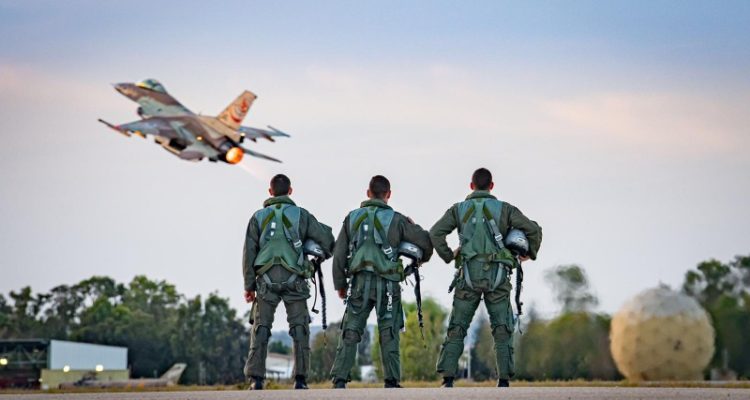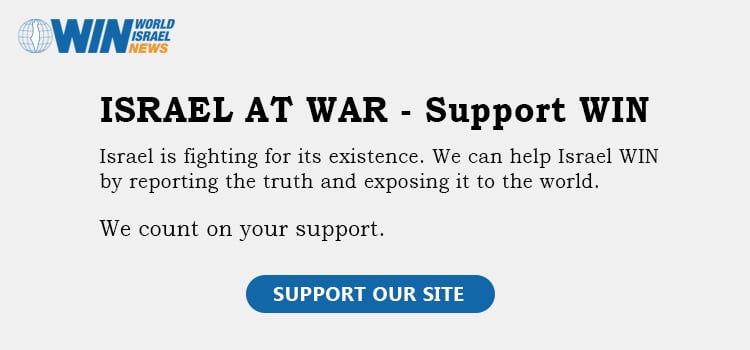‘The fire that is currently burning in Hudaydah is seen across the Middle East and the significance is clear,’ Israeli Defense Minister Yoav Gallant said.
By Yaakov Lappin, JNS
The Israeli Air Force strikes on key Houthi targets in Yemen on Saturday, targeting, among others, a fuel port used by the terror regime in Yemen to smuggle Iranian weapons, was also a warning to the Houthis’ Iranian sponsors.
“Operation Long Arm,” which was carried out by F-15 Eagles, according to the Israeli military, and also F-35 stealth fighters, according to unconfirmed international media reports, covered the same distance needed to hit targets in Iran, which does not lack vulnerable ports filled with oil and natural gas storage facilities.
The strikes were launched in response to a July 18 Houthi drone attack on Tel Aviv, which killed Israeli civilian and injured eight others.
An initial IAF review found that while Israeli air defenses tracked the drone, it was not classified as hostile due to a human error.
The drone, identified as an Iranian-made Samad 3, with local improvements to range made by the Houthis, was launched from Yemen and traveled some 1,243 miles to Tel Aviv, where it struck a residential building near the U.S. Embassy.
The attack has heightened concerns over the Houthis’ capability to execute long-range attacks, although they have been launching such attacks since the start of the current war in Gaza.
An IDF official detailed the extent of the Houthi threat on Saturday, stating, “Over 220 projectiles have been launched [by the Houthis] against Israeli civilians and infrastructure, the latest one killing a civilian and injuring many more.”
The official emphasized that “the Houthis attacks are acts of aggression, a flagrant violation of international law and a threat to international security and the Middle east stability. I remind you, the Houthis declared a maritime siege on Israel and parts of the Middle east and Europe, and have attacked dozens of times different navy vessels from different countries of all around the world in various terror aggressions, killing people, sinking ships, taking ships, and disrupting the whole economic system in the Middle East and in Europe.”
In retaliation, the IAF struck the Hudaydah port, a crucial hub for the transfer of Iranian weapons to Yemen. The IDF official noted that “the target was the Hudaydah port used by the Houthis as the main supply route for the transfer of Iranian weapons from Iran to Yemen.”
The strike targeted “dual-use infrastructure used for terrorist activities, including energy infrastructure,” said the official.
IDF Chief of Staff Lt. Gen. Herzi Halevi highlighted the broader implications of these actions, telling Israeli forces during a visit to Rafah in southern Gaza, “It’s all Iran. This UAV is Iranian, right? The Houthis took it, upgraded it, made its range longer, and this is Iran, and the funds for the tunnels here is from Iran, and we are operating against Iran with great determination.”
The Islamic Republic is “an octopus, it has many arms, you struggle with one arm here, you struggle with others there, and we must understand this matter. It demands excellence against each one,” he added.
Israeli Defense Minister Yoav Gallant, who was present at the IAF Command Center in Tel Aviv during the Yemen strikes, made clear that Israel’s response was a signal to the entire Iranian-led jihadist axis.
“The fire that is currently burning in Hudaydah is seen across the Middle East and the significance is clear,” he said.
“The Houthis attacked us over 200 times. The first time that they harmed an Israeli citizen, we struck them. And we will do this in any place where it may be required. The blood of Israeli citizens has a price. This has been made clear in Lebanon, in Gaza, in Yemen, and in other places—if they dare to attack us, the result will be identical.”
The drone attack on Tel Aviv is a stark reminder of the growing threat posed by Iranian-backed militias in the region.
These terror entities, operating in Yemen, Iraq, and Syria, together with Iran’s flagship proxy Hezbollah in Lebanon, have increasingly relied on UAVs—long-range in the case of Yemen, Iraq, and Syria, to target Israel.
This strategy aims to stretch Israel’s air defenses, which are already dealing with frequent rocket and UAV attacks from Hezbollah in the north.
IDF Spokesperson Rear Adm. Daniel Hagari addressed the UAV threat, stating that the Samad 3 UAV had entered Israeli airspace from the sea to the west. He confirmed that the UAV was an Iranian weapon system upgraded to increase its flight range.
Hagari also mentioned the continuous efforts to intercept UAVs launched from Yemen, noting, “So far, dozens of UAVs have been launched from Yemen alone; most have been intercepted or shot down while en route or before entering Israeli territory.”
Most were intercepted by the U.S. Naval Task Force in the Red Sea, while the remainder were intercepted by Israeli aircraft and air defense systems.
The same array is now prepared to deal with any future Houthi attacks.
He emphasized that defense is not airtight and that Israel is constantly improving its capabilities to better protect its citizens.
“We are in a multi-front war, operating in all arenas, and in the defense of the state’s airspace every day,” said Hagari. “These arenas are both near and far. We operate against all threats.”





